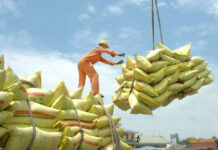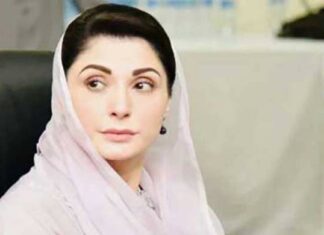Economic achievements in difficult circumstances during former president Pervez Musharraf‘s regime are dismissed outright because of abhorrence of the military rule, imposition of the emergency in 2007, his decision to join the US in Afghanistan War, open tussle with the judiciary, withdrawal of corruption cases against politicians, and his quest to get elected in uniform. This column is an attempt to provide a first-hand, data-driven account of the economic record of the period 2000-2008.
Pakistan suffered serious setbacks in the 1990s in terms of economic and social indicators. Economic growth rates decelerated, inflation rose to peak rates, debt burden escalated substantially, macroeconomic imbalances widened and worst of all the incidence of poverty almost doubled. Pakistan’s credibility in the international financial community was at its lowest ebb as successive agreements concluded with the International Financial Institutions (IFIs) were not implemented. Foreign investors were unhappy as all power purchase agreements were being re-examined and criminal action was initiated against Hubco.
The situation exacerbated after the nuclear testing in 1998 when sanctions were imposed on Pakistan. External liquidity had dried up due to freezing of foreign currency deposits of $ 11 billion held by resident and non-resident Pakistanis. The loss of confidence evaporated workers remittances, foreign investment and foreign currency deposits. The assumption of power by the military government in October, 1999, led to fresh sanctions, and bilateral and multilateral official flows were suspended. Credit rating agencies downgraded Sovereign Credit of Pakistan to the Selective Default category, and therefore the door for access to financial markets was shut down. The country faced a gap between external receipts and payments of $ 2.5 to 3 billion annually for the next five years. The new cabinet had to face this crisis i.e how to meet its current obligations such as imports of goods and service, its debt service obligations and other payments with almost no reserves. To fill in this gap and keep the wheels of the economy moving Pakistan had to get its debt service obligations rescheduled for which it was imperative to have an agreement with the IMF.
Pakistan entered into a stand-by arrangement with the IMF in 2000 for a nine-month period followed by a three-year Poverty Reduction and Growth Facility (PRGF). For the first time in the history of Pakistan the IMF was able to complete all reviews successfully and released all tranches on time. The credibility of Pakistan vis a vis international financial institutions was restored setting the stage for a re-profiling of Pakistan’s external debt owed to Paris Club. This re-profiling of bilateral debt resulted in the reduction of external debt and liabilities as the percentage of foreign exchange earnings from 224% to 125% and debt servicing from 26% to 9%, saved $ 1 billion annually for an extended period of time.
Pakistan’s economic performance under Musharraf was impressive in terms of income per capita, employment generation and poverty alleviation. As a result of a reasonably high GDP growth rate of about 6.3% a year the per capita income in current dollar terms rose to about $ 1000. The Headcount Poverty ratio fell from 34% to 15%. Unemployment rate also fell from 8.4 % to 6.5%, and about 11.8 million new jobs were created. Gross and net enrolment at the primary level improved and health indicators such as children immunisation, incidence of diarrhoea and infant mortality showed favourable changes.
There are at least five strands of criticisms of economic policies pursued during the Musharraf era. It is therefore necessary to address each one of them with the aid of hard-published data.
First and foremost, it is the post-2001 massive capital flows of official aid from the US, other bilateral and multilateral sources that is responsible for the exceptional growth recorded during this period. The annual gross flows from all official bilateral and multilateral sources received between 2002 and 2008 accounted for 8.5 % of Pakistan’s total foreign exchange receipts (the US provided 4.5% of this total) . The remaining 91.2% of foreign exchange receipts were generated by exports, remittances, and Foreign Direct Investment.
Thus, the impact of these capital flows is highly exaggerated as the amounts received are no different from the historical record of foreign assistance or subsequent acceleration of US assistance under the Kerry Lugar bill. The annual net official assistance between 2009-2014 was $ 2.8 billion compared to $ 1.6 billion between 2002-2008. A British researcher found that “the statistical evidence failed to relate these US aid capital inflows with savings and investment, expenditure, imports, domestic and external debt, corporate profitability and boost in public investment. The episode of growth was better explained by a stronger government able to mobilise domestic resources, ensure that they were utilised productively and create institutions that were able to overcome the conflicts associated with economic development”.
The second popular perception is that Pakistan’s debt reprofiling was made possible by the US because of September 11, 2001 events. As a matter of record, the broad contours of this arrangement were agreed with the IMF and Paris Club long before September 11 as Pakistan had successfully implemented the standby agreement with the Fund establishing its credibility and becoming eligible for their medium-term facility. It is true that the formal agreement was signed in December 2001 but the lead time because of extensive preparation, negotiations and building consensus of 20 members of Paris Club had taken almost a year.
Third, there are those who argue vociferously that Musharraf did not take advantage of debt relief and did not focus on any structural reforms, oversaw Pakistan spending beyond its means and that the growth was fueled by consumption.
What does the evidence show?
Investment/GDP ratio touched 23% which was the highest in Pakistan’s economic history and has since then revolved around 15%. The structural reforms consisted of fiscal consolidation by raising tax revenues, reducing expenditures, cutting down subsidies and containing the losses of public enterprises. Tax reforms were undertaken to widen the tax base, remove direct contact between taxpayers and tax collectors, introduce value-added tax as the major source of revenue, simplify tax administration and strengthen the capacity of the Central Board of Revenue. The adoption of universal self-assessment followed by random audit of selected tax returns, automation and reorganisation of the tax machinery helped tax collection to double in five years.
To tackle external account weaknesses, trade policy reforms and liberalisation helped the country in earning foreign exchange through non-debt-creating flows. Exports of goods almost tripled from $7.8 billion to $ 21.2 billion, along with a six-fold increase in workers remittances ($1 billion to $6.5 billion). Foreign exchange earnings almost tripled from $ 16.8 billion to $ 46.0 billion. Tariffs on imports were rationalised and brought down to average 7.6%. FDI inflows touched $ 5 billion in each of the last two years and foreign exchange reserves rose from $ 991 million to $ 14 billion covering six months’ imports .
An aggressive privatisation plan of state-owned enterprises in oil and gas, banking, telecommunications and energy yielded $ 3 billion. The privatisation of Habib Bank, United Bank, and Allied Bank – three large nationalised commercial banks of the country transformed the banking sector into an efficient, privately owned and managed sector. Private sector credit grew at an average rate of 25% annually. At the same the central bank was granted autonomy and its capacity strengthened. Banks became profitable, non-performing loans were reduced substantially, and interest rates fell significantly. Capital market capitalisation rose eight times and 60 new IPOs were listed and 48 corporate debt bonds issued.
Oil and gas, telecommunication, media and civil aviation sectors were deregulated. New gas fields operated by private sector companies added new capacity to meet the growing energy needs of the country. Power generation exceeded the demand and relied predominantly on domestic fuel i.e. natural gas thus saving foreign exchange. Telecommunication witnessed a boom since private sector companies were allowed licences to operate cellular phones. Telephone penetration rate reached 50% with 70 million subscribers.
The cornerstone of the governance agenda was the Devolution plan which transferred powers, responsibilities and financial resources from the federal and provincial governments to local governments headed by elected representatives. A new Police Order replacing the 19th century law was passed to modernise the force. The National Accountability Bureau (NAB) was established under a new legal framework as the main anti-corruption agency.
Fourth, some economists are of the view that the loose monetary policy stance of SBP resulted in overheating of the economy and led to inflationary pressures. It is true that the monetary policy in initial years managed to kick start the economy when it was trapped in low growth-low inflation equilibrium. Until FY 2005 inflation remained subdued (the average rate for first five years was slightly below 4%) but subsequently the inflation target slipped due to the uptrend in the global commodity prices as well as inefficiencies of wholesale and retail markets.
As soon as there were signs of upsurge in inflationary pressures, interest rates were raised and monetary policy tightened. Other macroeconomic indicators also did not provide any signs of overheating as the fiscal deficit was contained between 3 to 4% and the current account was in surplus for three consecutive years and in negligible deficit in the next two years. Domestic productive capacity in agriculture and manufacturing had been expanding and thus supply shocks were not imminent. Excess demand therefore did not spill over into higher imports which were in any case financed mainly by non-debt creating flow. How can one, in the weight of this overwhelming evidence, read overheating of the economy?
Finally, it has been surmised by some economists that the exchange rate was artificially fixed for over six years. The data on Real Effective Exchange rate for this entire period does not show any such indication as it hovered around 100 deviating from the mean by 5 percentage points. Exchange rate can be defended by the SBP only if it is burning its reserves. In this period the situation was quite the opposite. Foreign exchange reserves were accumulating at a rapid pace because of huge inflows of export earnings, remittances and FDI, official grants and relief on account of debt servicing rising from $ 0.9 billion to $ 14 billion. The SBP had the difficult task of avoiding appreciation of the exchange rate, thus hurting exporters, and had to sterilise these foreign inflows.
It is, however, true that the policies pursued in 2007/08 did leave the economy in a parlous state. The momentum of growth slowed down due to derailment from the past track. Fiscal and current account deficits did widen leading to excessive borrowing, resulting in expansion in money supply, shrinking foreign capital inflows, intensifying inflationary pressures to reach double digits, and exchange rate coming under pressure as foreign reserves depleted. Both agriculture and large-scale manufacturing performed poorly. International prices of food and fuel were not passed onto the consumers because of political considerations in an election year. This expediency cost the country another round of the IMF programme which the new government had to enter in 2008. The lesson is that delayed and postponed decisions bring with them avoidable grief to the economy.
























Welcome to Versatile Coupons, the final location for getting a versatile deal on your internet-based buys. Our central goal is to assist customers with enjoying you find the best arrangements and limits on the items you love. We comprehend that setting aside cash can be intense, particularly while shopping on the web. That is the reason we’ve made it our objective to present to you the best-in-class coupons and markdown codes from top retailers. Whether you’re looking for garments, gadgets, or home merchandise, we take care of you.
Dr Ishrat twisting facts to justify his support for the dictator. what was the export to GDP ratio? not mentioned. what was the trade deficit? not mentioned. what was the power demand and supply? not mentioned. why crippling power shortages started in 2007? not mentioned.
Musharraf regime was prosperous period in Pakistan
The article provides some statistical data to support its claims, including an increase in GDP growth rate and foreign reserves, and a reduction in inflation and poverty rates. However, it also acknowledges some criticism of the reforms, including concerns about the impact on social welfare programs and income inequality.
Overall, the article provides an interesting perspective on the economic policies of Musharraf’s government and their impact on Pakistan’s economy. However, it would have been helpful to provide some additional analysis on the long-term sustainability of the economic growth and the potential impact of the reforms on different sectors of the economy.
Mian Nadeem Facebook messenger account id number on 03016650922 WhatsApp
That is the reason we’ve made it our objective to present to you the best-in-class coupons and markdown codes from top retailers.
❤️❤️❤️
I agree with Dr Ishrat Hussain with few disgreements. 90% he is correct about the state of economy during Musharraf rule.